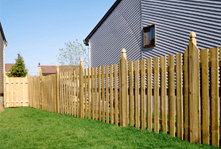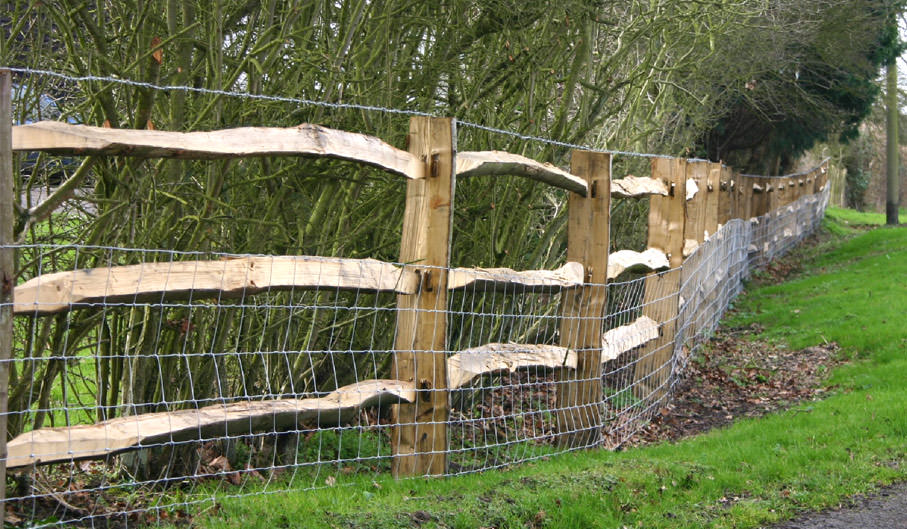How to Stay On the Right Side of Regulations With Help From a Fence Company
How to Stay On the Right Side of Regulations With Help From a Fence Company
Blog Article
A Comprehensive Overview to Fence Install: What You Required to Learn About Fencing Provider
When it pertains to installing a fence, you have actually got a whole lot to ponder. From picking the right products to recognizing regional guidelines, each action can really feel frustrating. You'll require to assess your property and choose if you want to deal with the installment on your own or hire a specialist. That's just the beginning. Let's check out the necessary elements that can make or damage your fence project.
Recognizing Various Sorts Of Fence Products
When you're choosing a fencing, recognizing the various kinds of fencing materials is important. Metal fencing, like functioned iron or light weight aluminum, uses toughness and elegance but might need rust protection. Ultimately, selecting the right material will aid you develop a fencing that meets your demands and boosts your building's worth.
Evaluating Your Property and Secure Fencing Requirements
Before you start your fence installment, it's important to assess your building boundaries and the function of your fencing. Recognizing neighborhood policies and permits will additionally assist you avoid any lawful concerns down the line. By taking into consideration these aspects, you'll assure your fencing meets both your demands and area criteria.
Residential Property Boundaries and Lines
Recognizing your home limits is vital for a successful fencing installation, as it not only aids you figure out where your fence will go but additionally assures you're respecting your neighbors' space. Begin by assessing your property deed or survey, which generally lays out the specific boundaries. You may additionally desire to speak with a professional property surveyor if you're unclear.
Bear in mind, neighborhood zoning laws might determine fencing positioning and elevation, so inspect those policies too. Taking these steps warranties your fencing is effectively positioned and compliant, making the whole process smoother for you.
Function of Fence
Third, fencing can define your residential or commercial property borders, making it clear where your area finishes and your next-door neighbor's starts. A well-placed fence can aid handle sound from neighboring roadways or next-door neighbors and also maintain pets and children risk-free. By examining your specific needs, you can choose the right kind of fencing to achieve these benefits successfully.

Local Rules and Permits
How can you assure your fence installation complies with regional regulations? Some areas call for permits for any type of new fence, while others might just require them for taller structures.
Additionally, think about property lines and any easements on your land. Marking your boundaries can avoid disagreements with next-door neighbors or potential lawful concerns. By understanding these regulations in advance, you can prevent pricey errors and identify your fence is built to last, improving both your residential property's worth and your tranquility of mind.
Local Laws and Permits for Fence
Before you start your secure fencing project, it is very important to inspect neighborhood policies and obtain any type of essential licenses. Each city or region has its very own rules relating to fence height, materials, and positioning. These policies assure that your fence abides by safety criteria and area aesthetics.
Start by seeing your local zoning office or their site to locate details needs. Fencing in South Auckland. You may need to send a fencing strategy, detailing dimensions and materials. Some areas may also need a survey to validate residential or commercial property borders. Do not fail to remember to take into account any kind of homeowners' association (HOA) standards, as they can enforce extra restrictions.
Overlooking to follow these policies can cause penalties or forced removal of your fence, throwing away both money and time. So, take the time to research and safeguard the appropriate authorizations for a smooth setup process. This action is essential in ensuring your task straightens with regional regulations and neighborhood requirements.
Choosing In Between DIY Setup and Specialist Services
Are you taking into consideration whether to take on the fence setup on your own or hire an expert? If you're helpful and have this experience with comparable jobs, Do it yourself may save you money.
Next, think about the moment dedication. Installing a fence requires time, and if you're handling a hectic timetable, hiring a professional can assure it gets done successfully. In addition, think concerning the intricacy of the job. If your yard has challenging surface or particular layout needs, professionals bring knowledge that can make a distinction.
Last but not least, variable in regional guidelines. A professional recognizes the permits and codes required, assisting you stay clear of possible penalties. Eventually, evaluate your skills, time, intricacy, and guidelines to make the very best selection for your secure fencing project.
Step-by-Step Guide to Fencing Installation
Once you have actually made a decision to move on with your fence installment, following a structured detailed method will guarantee a smooth procedure. Beginning by noting the fencing line with stakes and string to picture the design. Next, examine local laws to validate compliance with height and residential property lines.
Dig blog post openings a minimum of two feet deep, spaced according to your fencing kind-- usually 6 his response to 8 feet apart. Put the blog posts into the openings and fill them with concrete for stability. As soon as the blog posts are established, affix the straight rails or panels, seeing to it they're degree.
Check for any type of loose connections and make needed adjustments. Your fence ought to now be all set to enhance your building and offer the personal privacy or safety you need!
Maintenance Tips for Longevity of Your Fence
To keep your fence looking great and lasting much longer, regular maintenance is key. You must establish a cleansing timetable, examine for any damage, and use protective layers as required. By remaining positive with these tasks, you'll assure your fencing remains tough and eye-catching for years to find.
Normal Cleansing Arrange
While it may be simple to overlook, developing a regular cleansing timetable is vital for maintaining the long life of your fencing. Beginning by rinsing your fencing with water at the very least when every season to get rid of dust and particles. For wood fencings, use a gentle soap remedy and a soft brush to scrub away any type of mold or mildew. Don't forget to examine for any kind of corrosion on metal fences; a wire brush can aid eliminate it, followed by a layer of rust-resistant paint. If you live in an area with hefty pollen or dust, you might desire to boost your cleansing regularity. Maintaining your fence clean not just boosts its look yet additionally expands its life, conserving you money in the lengthy run.
Check for Damage
Routinely evaluating your fence for damages is crucial if you desire to preserve its integrity and long life. Begin by strolling around your fence to look for noticeable indications of wear, such as fractures, loose boards, or corrosion. Inspect for any indications of insects, like termites or woodpeckers, that might jeopardize your fencing's structure.
Apply Safety Coatings
After evaluating your fence for damages, using safety finishings is a vital step in guaranteeing its long life - Fence Contractors. If your fencing is plastic or steel, think about a UV-protective spray or paint to avoid fading and corrosion.
Make sure to cleanse the surface area thoroughly before application, as dust and grime can weaken the coating's effectiveness. Use the finish in completely dry weather condition for better attachment, and do not fail to remember to follow the maker's guidelines for the very best outcomes. Routinely reapply every few years to maintain your fencing looking great and standing strong versus the elements.
Cost Factors To Consider and Budgeting for Your Fence Job
When preparing your fencing task, recognizing price factors to consider is necessary to staying within spending plan. Beginning by establishing the kind of product you want, as prices can vary greatly in between timber, vinyl, and steel. Do not fail to remember to consider labor expenses-- working with experts might conserve you time but pop over here can increase your total expenditures.
Next, gauge your residential property to determine the linear video needed, as this straight influences material prices. In addition, consider any type of licenses you could require, which can contribute to your spending plan.

Lastly, it's a good idea to reserve a contingency fund for unforeseen expenses. By intending very carefully and considering these variables, you can create a practical budget that satisfies your secure fencing needs without damaging the financial institution.
Regularly Asked Concerns
The length of time Does the Average Fencing Setup Take?
The standard fencing installment generally takes one to 3 days, depending upon the fencing kind and dimension of your lawn. You'll need to take into account any type of delays because of weather or permit requirements also.
What Should I Do if My Fencing Is Harmed?
If your fencing is harmed, initially analyze the level of the damages. Repair small issues yourself, but also for significant issues, consider contacting an expert. Do not wait too long; it'll assist stop better issues.
Can I Set Up a Fencing on a Slope?
Yes, you can set up a fence on an incline. You'll require to change your installment approach, either by stepping the panels down or making use of a racked layout to ensure stability and appropriate alignment with the terrain.
What Are the Finest Practices for Fencing Painting?
To paint your fencing properly, begin with appropriate cleansing and sanding. Use high-grade paint and use in even strokes. Do not forget to select the ideal weather for painting, ensuring it's completely dry and mild.
How Commonly Should I Inspect My Fencing?
You ought to examine your fence a minimum of twice a year, concentrating on indications of damage, rot, or rust. Normal checks aid you catch problems early, guaranteeing your fencing continues to be strong and visually enticing much longer.
Report this page